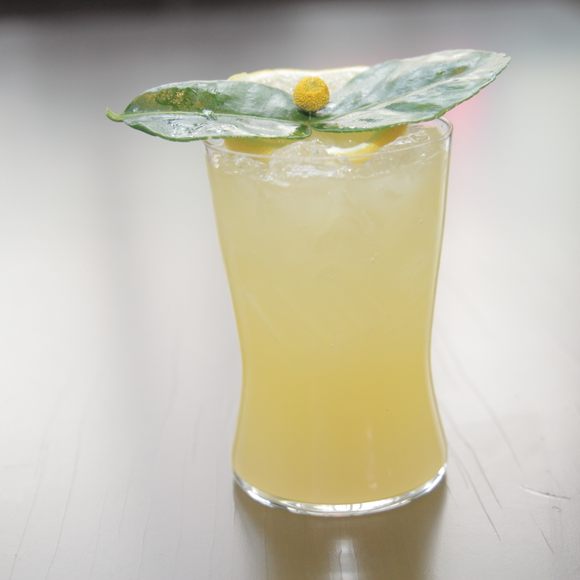This dandelion-yellow bulb wouldn’t warrant a second look if it popped up on your lawn or between the cracks on the sidewalk. It’s hard to ignore, though, once you start chewing.
The experience of eating a Szechuan button, a nondescript, flowering herb, is revealed by its other names: buzz button and electric daisy. Spilanthol, a natural alkaloid in the plant, activates the salivary glands and causes an intense tingling sensation that eventually subsides to numbness. One professional reviewer described the taste as “like a 9-volt battery.” While the feeling of eating a Szechuan button is startling, the taste is mild and grassy.
But people rarely eat Szechuan buttons by themselves. Instead, chefs and mixologists serve the flower, which patrons eat raw and whole, alongside cocktails or foods to alter their flavors.
One of the Szechuan button’s more well-documented appearances is at the Chandelier Bar at Las Vegas’ Cosmopolitan hotel and casino. Though it was taken off the menu a few years back, patrons can still order the Verbena, a ginger and lemon-verbena flavored margarita with a lackluster-looking Szechuan button on top. The cocktail server instructs patrons to chew the flower for 30 seconds before swallowing and trying their drink. According to advocates, the flower’s tingling effect primes imbibers for the drink’s citrusy sweetness and makes the cold more biting.
The flower’s active ingredient, spilanthol, is a known painkiller and antioxidant, leading to its other name: toothache plant. Before appearing on the grocery lists of mixologists and chefs, the plant was used as an herbal remedy in parts of Asia, South America, and North Africa for toothaches and stomachaches.
The Szechuan button has also been used as a flavoring in chewing tobacco in India and as seasoning in Brazilian soups and stews. The plant earned the name Szechuan button because its effect in cooking is similar to that of Szechuan pepper, although the plants are not related.
Where to Try It
-
Plan Check Kitchen and Bar
1111 Wilshire Boulevard, Los Angeles, California, 90017, United StatesThis bar offers the Szechuan button alongside their version of a Penicillin cocktail.
-
The hotel and casino on the Las Vegas Strip offers a cocktail garnished with a Szechuan button at the Chandelier Bar.
Written By
 sarahcorsa
sarahcorsa
Edited by
Sources
- www.afar.com/magazine/the-secret-drink-you-have-to-try-in-vegas
- www.pastemagazine.com/articles/2015/08/electric-daisy-and-the-weirdest-cocktail-ever.html
- www.washingtonpost.com/wp-dyn/content/article/2007/10/02/AR2007100200464.html
- www.liquor.com/articles/szechuan-button-cocktails/#gs.JKZF7eI
- www.npr.org/templates/story/story.php?storyId=101304548
- www.foodandwine.com/articles/cachaca-the-spirit-of-brazil
- eatrio.net/2011/09/anaesthetic-soup-tacaca.html








 nathanlouis1
nathanlouis1








